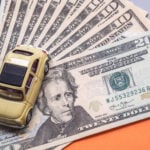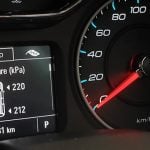Abbreviations are a routine when we talk about cars. TC, RPM, ABS, TPMs, and the list goes on. In the last decade, most manufacturers have included ABS as standard equipment. In addition, the government mandated in September 2011 that all new cars have anti-lock brake systems. So, what does ABS mean in a car? Keep reading for a simple guide to everything you need to know about the anti-lock brake system in cars.
What Is the Anti-lock Brake System in a Car?
When you travel at high speeds, your car can skid. Consequently, you can lose control over your car, resulting in accidents. ABS, designed as a safety mechanism, prevents car brakes from locking in such situations.
We can imagine the ABS working by stopping the car immediately under the mentioned circumstances. However, the anti-lock braking system works in such a way that it provides distance, helping you to avoid the possibility of an accident due to skidding.
For instance, harsh braking can lock up wheels, preventing them from spinning while on the road. As a result, the car can lose momentum, which can lead to collisions. With ABS in action, the wheels are managed by the steering input.
However, you may witness a vibration on the brake pedal or pushback when ABS is in action, which is a common reaction. In other words, you can take it as a cue to continually press and hold the brake, followed by steering it to safety.
Types of ABS
| Type of ABS | Where is it found? |
One-channel, one-sensor ABS |
On pickup trucks, SUVs, and vans with rear-wheel ABS. One valve, which controls both rear wheels, and a one-speed sensor located in the rear axle |
Two-channel, four-sensor ABS |
Found in passenger cars from the late ’80s and ’90s. A speed sensor at each wheel, with one control valve for the front and rear wheels as a pair. |
Three-channel three-sensor ABS |
They are used in pickup trucks with four-wheel ABS. A speed sensor and a valve for each front wheel, with one valve and one sensor for both rear wheels. |
Three-channel, four-sensor ABS |
All four wheels have a speed sensor and a separate valve for each of the front wheels, but only one valve for both of the rear wheels |
Four-channel four-sensor ABS |
All four wheels host a speed sensor and a separate valve for each wheel. |
How Does ABS Work in a Car?
ABS, or the anti-lock brake, might look easy to deduce from the name. But is it so? What is the mechanism behind one of the most important safety features in a car? Speed sensors, valves, pumps, and the electronic control unit (ECU) form the major components of the anti-lock braking system.
Working the anti-lock brakes in a car might remind you of the cadence breaking. The working of the ABS is relative to the speed sensors on the wheels. Firstly, these sensors detect any reduction in speed in any of the wheels. Secondly, the ECU deduces the signal from each wheel. Consequently, the brake pressure on the wheel spinning slowly is reduced to prevent it from locking.
When the wheels speed up, the speed sensors transmit the signal to the ECU one more time, raising the brake pressure. This loop continues until the brakes can be applied normally.
What Are the Benefits of ABS?
- Prevents your car from skidding by avoiding the wheel locking up.
- It aids in avoiding collisions by giving better control to the driver.
- Helps the driver give steering inputs on dangerous roads or before hindrances.
- Wards off uneven wear and tear of the wheels.
- Improves the lives of brake pads and brake discs.
- It assists the traction control system in a car.
When Does the ABS Light Turn on in a Car?
A malfunctioning ABS is a reason for the ABS light to remain switched on. There are several reasons for the ABS light to turn on in a car.
- Faulty sensors that cannot pass a signal.
- Completely damaged ABS.
- Blown fuse in the ABS.
- Damaged wire between the ABS sensors and the controllers.
- The low brake fluid in the brake system.
- If the system is accidentally turned off.
How Do I Detect ABS Issues?
In addition to the illuminated ABS light, one can suspect issues with the anti-lock braking system if you encounter the following troubles.
- Unresponsive brake pedal
- Locking up of brakes
- Turned on check engine light
What Should I Do When the ABS Light Turns On?
One of the most common doubts that can come into our minds about ABS is whether one can drive with the ABS lights turned on. If you notice the ABS light illuminated, you should pull over, turn off the engine, and restart it. As a result, the computer will examine the sensors once more for inconsistencies.
However, the car may still be safe to drive even if the ABS warning light is illuminated. You will still have normal braking capabilities even if the ABS warning light is illuminated, provided no other brake warning lights are switched on.
You can certainly continue driving if you see it switched on, but be careful since the system may not assist you while driving.
Common Queries on ABS
Is it okay to pump the brakes when driving a car with ABS?
You do not have to pump the brakes while driving a car with ABS. However, one should hold the brakes firmly to navigate smoothly through the situation.
What is rear-wheel only ABS?
Rear-wheel-only ABS does a similar job, but it is found in vehicles such as pickup trucks, vans, and SUVs.

Sara Sam may not look like your typical car and finance expert, but don’t let that fool you. With over four years of experience in the industry, she knows all the ins and outs of cars, car insurance, and refinancing. You can trust Sara to help you navigate the often-confusing world of automobiles and financing.

















